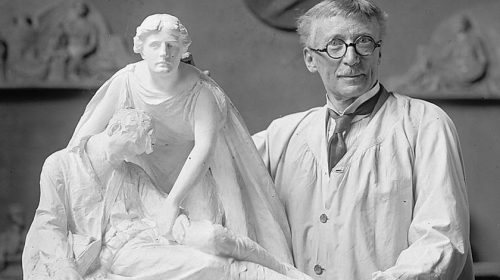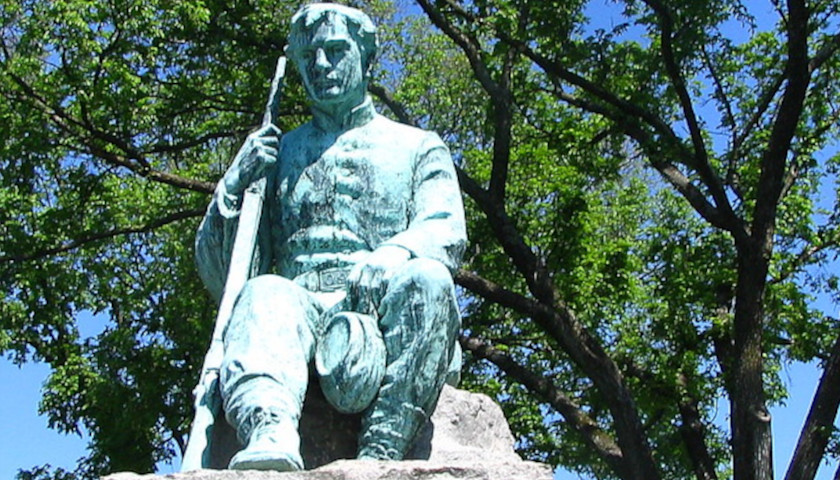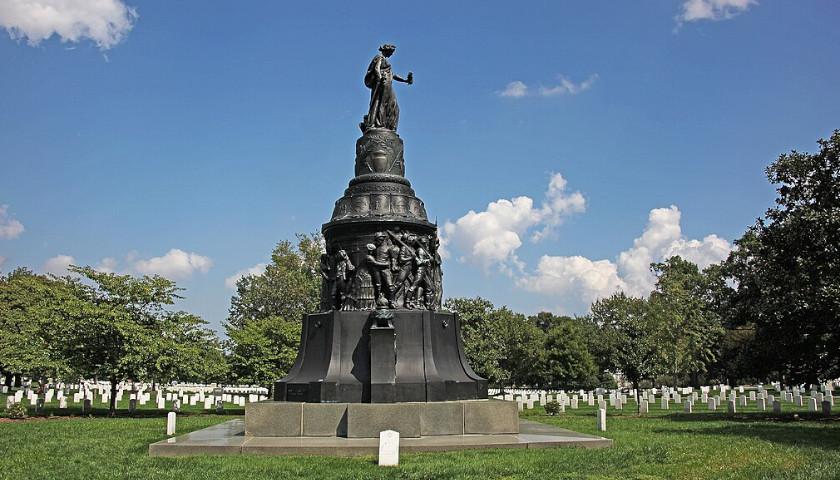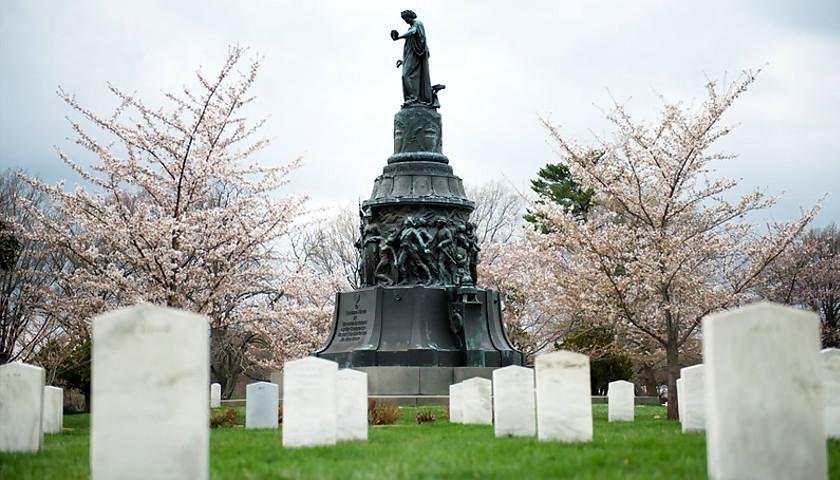Contrary to certain government historical records, the Confederate Private Monument doesn’t depict Boy Hero of the Confederacy Sam Davis. In a previous report, The Tennessee Star relayed information provided by the archives of the Nashville Public Library and the Smithsonian Institution. Both resources concurred that the seated statue atop the monument was a likeness of Sam Davis sculpted by famed artist George Julian Zolnay.
However, several historians contended that this information was inaccurate – that Davis wasn’t the statue subject. The Star confirmed those assessments through the original news publication documenting the monument’s dedication, as well as a contemporaneous history book written on the subject of Confederate monuments.
In an interview with The Star, President of the Sam Davis Memorial Association Dr. Steve Murphree asserted that the man depicted by the statue was intended to represent a generalized soldier, not any one specific individual.
“This is just a memorial to the enlisted private soldiers who defended their new country,” stated Murphree. “That great human cost was 750,000 lives lost. This is a memorial that was to those men from Davidson County. Sam Davis was enrolled in the Western Military Institute in Nashville at the time the war broke out. [Then h]e went to Rutherford county and joined the brigade which went to Virginia. He was a seasoned soldier, though he’d just turned 21.”
Retired Vanderbilt history professor Dr. Michael Bradley told The Star that the man depicted in the private Confederate monument has a similar appearance to the Sam Davis Statue outside the Tennessee State Capitol. Zolnay was the sculptor of both statues, which might explain the striking similarities. However, Bradley confirmed Murphree’s assessment that the inscriptions on the monument relayed its intent: to commemorate the Davidson County Confederates – not Davis, a Rutherford County native.

Murphree and Bradley were both correct in their assessments. The monument’s unveiling was documented in The Nashville American, the predecessor to The Tennessean, in an article dated June 20, 1909. Featured on the front page was a picture of Zolnay and the statue portion of the monument.
A court of civil appeals judge referred to as S.F. Wilson, a veteran of the Confederate Army himself, gave the tribute to the monument at its unveiling, but didn’t mention Davis in his speech. Also in attendance were the United Confederate Veterans (UCV), United Daughters of the Confederacy (UDC) and several local chapters, and members of the Frank Cheatham Bivouac.
Zolnay gave a short speech, reprinted in full here:
It seems to me that the one who modeled this statue should not talk. Since you have insisted upon it, you must stand the consequences. Yet I will not refer to the work itself. I merely want to say that if ever I modeled a monument to which I put my whole soul and heart, this is it. If ever I did work that I loved, this is it. There are more than two or three reasons why I loved the work. One reason is that the greatest work I have ever done has been done for the people of the Confederacy. Another reason I loved the work is that the greatest friends I have, the friends of all others that I love best, live in the Southern States. But the chief reason and the one nearest my heart is that I married a daughter of the South and a daughter of the Confederacy. She is the mother of my children, and I am glad to say that all of them were born in the South. I did not have the good fortune to be born in the South, but I had the next best good fortune when I married a Southern woman, the best and sweetest woman that God Almighty ever made.
Major B.M. Hord, the Chairman of the Executive Committee in charge of planning the monument, explained the history of the monument’s conception and purpose. Like Wilson, Hord didn’t mention Davis – just the bivouac.
“As far back as 1902 Comrade Theodore Cooley conceived the idea and suggested it to Cheatham Bivouac that we build a monument to the private Confederate soldier,” explained Hord.
In all, Hord explained that the monument cost $4,000 – around $120,000 in today’s dollars. Of those funds, Zolnay reportedly donated $500 of his own funds – around $15,000 in today’s dollars. Hord credited a bulk of the fundraising to the UDC First Tennessee Regiment Chapter.
While Zolnay was responsible for the statue portion of the monument, the cornerstone underneath was laid by the Grand Masonic Lodge of the State.
“It was proper and consistent that the cornerstone to a monument to be erected in honor of the greatest soldiery the world has ever seen should be laid by the oldest and grandest fraternal organization in the world,” stated Hord.
The account of 540 names listed on the cornerstone of the monument included 212 dead and, at the time of the unveiling, 328 living Confederate soldiers of the Cheatham Bivouac. Nowhere in the newspaper’s printed list was Davis’ name listed, further confirming that he wasn’t the intended identity of the statue.
– – –
Corinne Murdock is a reporter at The Tennessee Star and the Star News Network. Follow her latest on Twitter, or email tips to [email protected].
Photo “Confederate Statue” by Brent Moore. CC BY-NC 2.0.






The Confederate war is over. I’m from the North and you don’t see monuments of Union solders everywhere like you do in the South and the Union Army won the war. Tjr Confederate war was a dark time in the history of our Country. About slavery Why should this bad time be memorialized? It shouldn’t because it represents bad history.
I am so ashamed of how our politicians have betrayed the trust which was handed to them. The men who created these memorials intended for them to last as an inspiration for future generations.
Great article. Metro Parks wants this monument removed from Centennial Park. Please write metro parks if you desire to keep Tennessee History.
Facts are not important to those attempting to cancel history.
judging from the photograph the monument needs a good cleaning and left alone. seems the cancel culture is obsessed with anything cast in bronze or chiseled from stone.